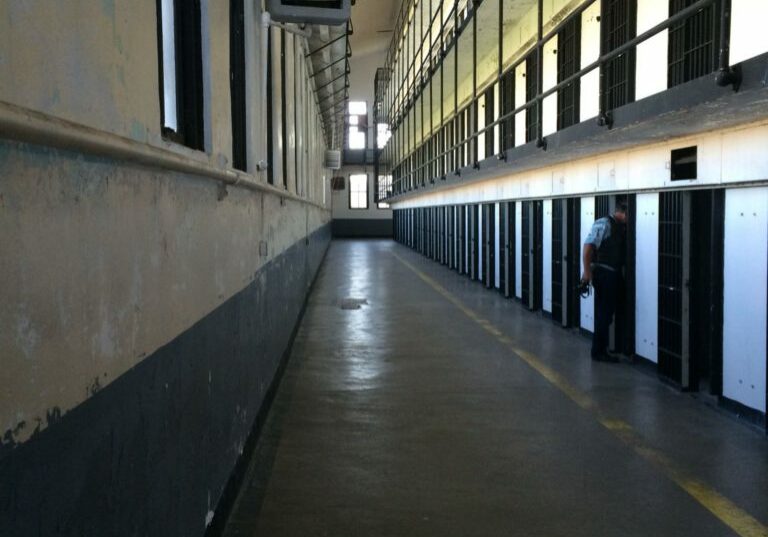Decarceration and the COVID-19 Pandemic
With coronavirus cases on the rise in carceral facilities across the United States, it is more than apparent that something must be done. Decarceration is a major way to prevent the virus from spreading, as well as addressing a number of other serious issues caused by mass incaraceration. In a new study published in The Lancet, researchers take a closer look at what mass decarceration means for a coronavirus-adapted society.

MASS INCARCERATION AND COVID-19
Mass incarceration has led to overpopulation within prisons and jails across the country. this means that most facilities are overcrowded. When a viral pandemic, like COVID-19 hits a prison, it spreads rapidly, simply because of the close-quarters living inside most facilities. Furthermore, inmates often have limited (or no) access to adequate cleaning supplies, proper healthcare or the ability to quarantine effectively. Additionally, inmates often develop major health issues while incarcerated, such as heart disease, diabetes and respiratory illness. These pre-existing conditions are exacerbated when an inmate contracts a major respiratory virus like COVID-19.
Finally, with an increase in longer sentence lengths, there are many aging people currently incarcerated at prisons across the country. This makes them doubly susceptible to developing serious complications should they contract the virus. See this article for more on the COVID-19 mortality rates inside prisons.
DECARCERATION RATES PRE/POST-COVID-19
The most promising solution to keep this pandemic in check is to release specific inmates early. Decarceration, or the act of reducing the number of currently incarcerated people, is the most obvious solution to addressing this pandemic. Although some institutions have released some qualified inmates, experts feel that this process is not happening fast enough.
Releasing inmates who are incapacitated, fifty-five or older, or have underlying chronic conditions are at low risk for reoffending. Despite this, pre-COVID-19 releases were especially rare, with only 9% of the 1.5 million current inmates ever achieving a compassionate release. Even with COVID-19 on the rise, the rate at which inmates are being released has not increased.
GOVERNMENTS RESPONSIBLE FOR INMATE WELFARE
As COVID-19 continues to wreak havoc on overwhelmed prisons, the article calls on the government to take action. Given the current over-population of many facilities, it is impossible to have inmates quarantine effectively. There must be a decisive movement to release more inmates. Other countries took decisive action early in the pandemic, and are now seeing a dramatic reduction in positive tests. Furthermore, these countries were able to implement more effective prevention and treatment methods. Reducing inmate populations in the United States would bring about a similar result.
SAFELY RELEASING INMATES
The struggle does not end when an inmate is released. Instead, these individuals face multiple limiting factors that prevent them from living a fulfilling life. It is nearly impossible for them to find well-paying jobs, especially for repeat offenders. Access to the basic necessities, like clean food or safe housing is hard to come by. Trapped in this cycle of “structural violence”, these people often find themselves incarcerated before they ever have the chance to reestablish themselves.
The coronavirus has exponentially amplified those challenges. Inmates on the verge of release must also now worry about their health both before and after their release. This stress, on top of the other uncertainties, only adds to strain on an persons physical and mental health. Furthermore, in cases where an inmate is asymptomatic, they risk spreading the virus to their communities. This means that locations like half-way houses, or other dormitory-styled housing are at greater risk of an outbreak.
POPULATION MANAGEMENT TO MITIGATE SPREAD
Although many prisons are claiming that they test all their inmates before release, that does not mean that its effective at preventing the spread. The article suggests that there are other, more effective means of preventing COVID-19, and other illnesses like it. Primarily, researchers argue that the simplest way of saving lives is to implement population management strategies in carceral facilities of all types.
In facilities where dorm-style living is commonplace, would benefit greatly from less in-person contact and more testing. However, it is even more important that these facilities begin the urgent process to depopulate. This would allow more effective social distancing, better cleanliness and general wellness of its charges.
DEPOPULATION ONLY THE FIRST STEP
However, there are other issues that desperately need to be addressed. These issues go beyond prison walls and half-way houses. COVID-19 has shaken the economy so significantly that finding affordable housing, and a job that can sustain an individual is nearly impossible for the average American. Now it is doubly as challenging for a former inmate to find work. Without a reliable way of sustaining themselves amid the pandemic, its little wonder that so many are at high-risk of suicide, relapse or reincaceration.
Conclusion
With COVID-19 cases on the rise, more decisive action is necessary to help mitigate further spread of the disease. Decarcerating these facilities provide more than an opportunity to address the pandemic, it provides society a means of reforming the justice system from the inside. Addressing only one facet of this issue will not solve the problem. More support for formerly incarcerated people is not only necessary, but absolutely essential if we want to see long-lasting change.
Recommended for you
MVRA Restitution And Loss Amount Inadequate, Eleventh Circuit Holds
United States v. Mitchell J. Stein : Mitchell Stein, a former attorney, challenged the district court’s loss and MVRA restitution determination in a mail, wire, and securities fraud prosecution arguing that the Government had failed to demonstrate both factual and legal causation for the loss amount.Using the same standard for Stein’s loss and restitution challenge,…
Career Offender Enhancement Cannot Be Based On Texas Possession With Intent To Distribute Conviction
United States v. Tanksley – Career Offender Enhancement : Dantana Tanksley was previously convicted in Texas under Section 481.112(a) of the Texas controlled substances act of possessing with intent to distribute a controlled substance. He was later enhanced as a career offender under federal sentencing guidelines. Under the federal sentencing guidelines, an individual can be…
Attorney Abandonment Claim Remanded For A Hearing
Mark Christeson filed a motion to re-open his habeas proceedings under Rule 60(b) arguing that his attorney’s failure to timely submit his 28 U.S.C. § 2254 petition (used by state prisoners but similar to a 2255) constituted attorney abandonment. The abandonment issue was key to resolving whether “extraordinary circumstances” existed to warrant granting Rule 60…




